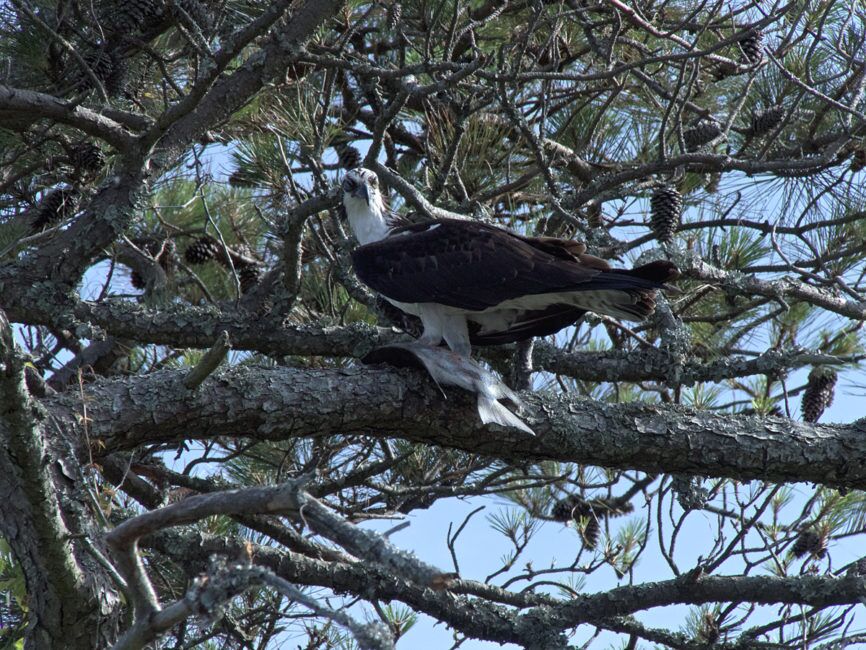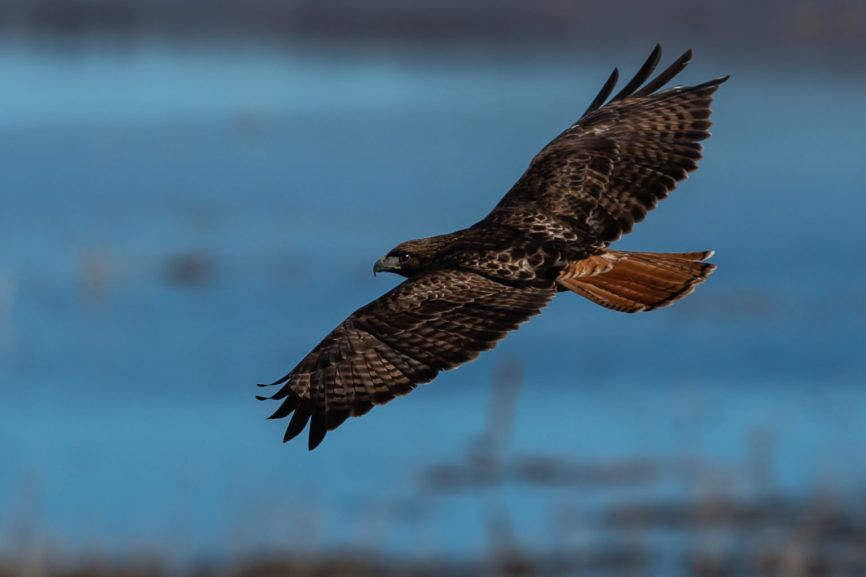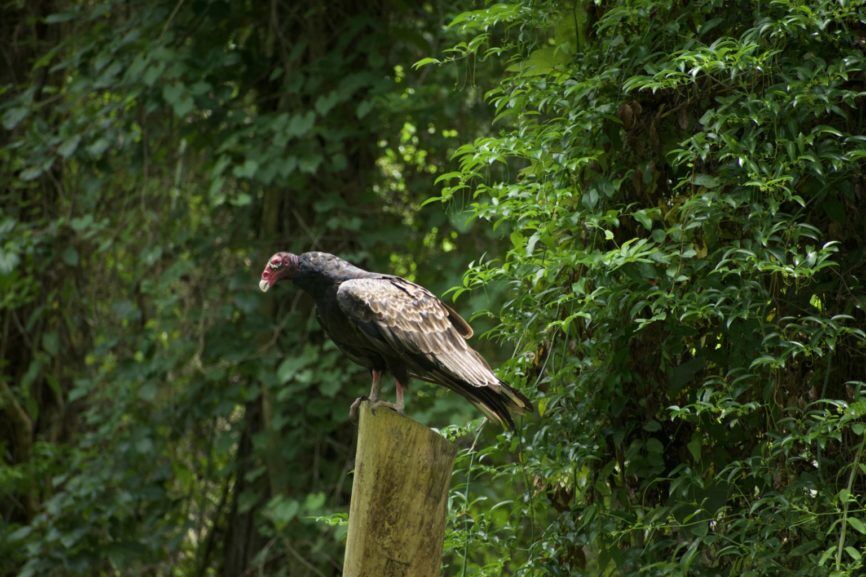Soaring over a body of water, or riding the thermals rising from a sand dune, raptors—birds of prey—are the most elegant of all birds on the Outer Banks.
Some of them we see all the time. Others are here but are not seen as often. And then there are the owls that are most assuredly here, but good luck spotting one.
Osprey

The osprey is probably the most familiar raptor to anyone who spends some time on the Outer Banks. With its white head, brown body, and long graceful wings that are mostly white in color, it is a beautiful sight to see in flight.
Feeding almost exclusively on fish, when an osprey captures one, its prey can be clearly seen in the bird’s talons.
Osprey are very easy to spot. Walk along the edge of any one of our sounds, and there will probably be an osprey or two soaring overhead. Listen for a high, screeching sound that is their call.
There are also quite a number of osprey nesting posts in the shallows of Outer Banks sounds where nesting couples raise their fledglings.
Generally a migratory bird, there is some evidence that in the southern areas of the Outer Banks, ospreys have become year-round residents. The best time to spot one is May through September.
Bald Eagle

Although not common, Bald Eagles have returned to northeastern North Carolina. A huge bird, an adult eagle weighs anywhere from 8-13 pounds, making it one of the largest North American raptors. With its distinctive white head, broad wings, and powerful talons, it is a bird that is easily identified.
Although a powerful raptor and capable of carrying more than half its weight in flight, eagles are actually very opportunistic feeders, willing to feast on carrion or steal a meal from another raptor as well as hunt for their own food.
Benjamin Franklin felt that behavior made the bald eagle unworthy of being the national symbol, writing, “For my own part I wish the Bald Eagle had not been chosen as the Representative of our Country. He is a Bird of bad moral Character. He does not get his Living honestly. You may have seen him perch’d on some dead Tree near the River, where, too lazy to fish for himself, he watches the Labour of the Fishing Hawk (osprey); and when that diligent Bird has at length taken a Fish, and is bearing it to his Nest for the Support of his Mate and young Ones, the Bald Eagle pursues him and takes it from him.”
Bald eagles do not get their distinctive white crown until they are fully mature, around five years of age.
Red-Tailed Hawk

Red-tailed hawks are the most likely hawk to be seen. However, they nest in denser forest settings, the bird hunts in open fields so it’s common to see them perched on a telephone pole or wire next to a road.
It is a fairly large bird, although very light in weight, which is why it can soar for long periods of time. The wings and tail are broad, and yes, the tail is a distinctive reddish-orange color.
Their call is a high-pitched, piercing screech that sounds just like the sound used for raptors in movies…because it is the sound that is almost always used to tell the audience a raptor is on the way in a movie.
There are other hawks that inhabit the area. Red-shouldered hawks, Cooper’s Hawk, and Broad-winged hawks are seen from time to time, although they are more secretive and not as numerous as red-tailed hawks. Cooper’s hawk and the Broad-winged hawk are migratory and are more likely to be seen in the winter.
Falcons

Not the most common raptor along the Outer Banks, but they are here. But good luck seeing one. Falcons are smaller birds and fast…very fast flyers. The Peregrine Falcon, which is a fairly common fall visitor, dives at its prey at speed exceeding 200 mph.
The American Kestrel is not nearly as fast, but it is quick enough that it can be hard to see.
Both birds are migratory and are more common in the fall and very rarely seen in the summer.
Owls

There are actually quite a number of owls that live around the Outer Banks, but the chances of seeing one are not very good. Hearing their distinctive hoot at night—that’s easy. But seeing these magnificent birds of prey is rare indeed.
Almost all owls are nocturnal and blessed with coloration that blends with their wooded environment; it’s almost impossible to spot one.
The three most common owls on the coastal plain are the hoot owl, barred owl, and Eastern screech owl. The Eastern screech owl is aptly named.
Turkey Vultures

A Turkey vulture is a remarkably graceful bird as it soars over the ridge of a sand dune riding a thermal looking for a meal of carrion.
Probably the most easily seen raptor along the Outer Banks, the bird’s wings are brown with some white in them. The head is bald and red, looking a lot like the head of a turkey.
Although most raptors are solitary, turkey vultures regularly roost together along roads or in trees. They will also often be seen gliding in groups as large as ten or 20 birds.
Turkey vultures are not aggressive birds. Clumsy and slow-moving on land, their size prevents them from taking flight quickly. Do not, however, get too close. One of their defense mechanisms is projectile vomiting, which given their diet, would be singularly unpleasant.
